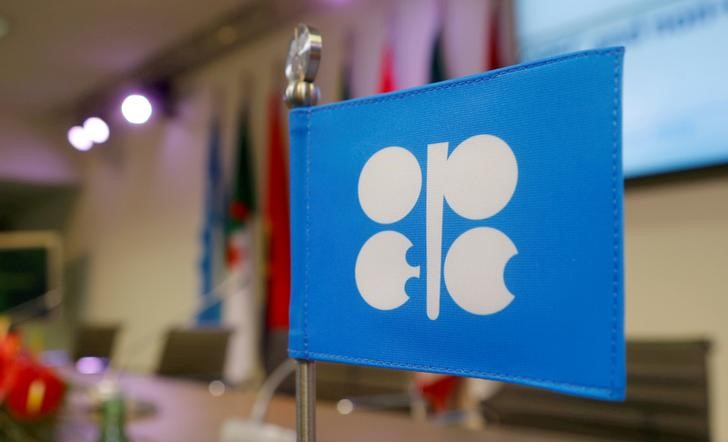By Alex Lawler
LONDON (Reuters) - OPEC said on Wednesday its oil production jumped in June and forecast world demand for its crude will decline next year as rivals pump more, pointing to a market surplus in 2018 despite an OPEC-led output cut.
Giving its first 2018 forecasts in a monthly report, the Organization of the Petroleum Exporting Countries said the world will need 32.20 million barrels per day (bpd) of crude from its members next year, down 60,000 bpd from this year.
OPEC said its oil output in June rose above the demand forecast, led by gains in Libya and Nigeria, two members exempt from the cut aimed at eliminating excess supply. OPEC officials nonetheless remain upbeat on the outlook.
"We remain very optimistic ... (about) helping the market to rebalance itself," OPEC Secretary-General Mohammad Barkindo said at an industry conference in Istanbul.
Oil (LCOc1) rose above $48 a barrel on Wednesday as a U.S. report of falling inventories in the United States raised hopes that the glut is easing. OPEC referred to an "ongoing rebalancing" of the market.
Under the supply deal, OPEC is curbing output by about 1.2 million bpd, while Russia and other non-OPEC producers are cutting half as much, until March 2018.
OPEC production has increased in recent weeks, in part due to the recovery in Libya and Nigeria, which were exempted from the supply cut as domestic conflict had curbed their output.
OPEC said its output rose by 393,000 bpd in June to 32.611 million bpd, according to figures from secondary sources the organisation uses to monitor supply. The gain was led by Nigeria and Libya, with extra barrels also from Saudi Arabia and Iraq.
The figures mean OPEC has complied 96 percent with the cutback pledge, according to a Reuters calculation, down from more than 100 percent in May but still high by OPEC standards.
"We are fully satisfied that member countries are maintaining a very high level of conformity," Barkindo said.
SAUDI, OTHERS PUMP MORE
The report also said Saudi Arabia, which earlier this year voluntarily cut production to below its OPEC goal, boosted output to 10.07 million bpd in June, slightly above target.
Supply is rising outside the group as well. OPEC estimated supply from all non-OPEC producers next year will rise by 1.14 million bpd, a sizeable increase from growth of 800,000 bpd this year led by the United States.
Next year's growth in non-OPEC supply is almost as much as the 1.26 million bpd rise that OPEC expects in global demand, and is even more if OPEC output of natural gas liquids - a type of supply not restricted by OPEC quotas - is included.
The United States is expected to contribute the largest non-OPEC supply gain next year, OPEC said, even though cost inflation and a decline in well productivity will curb shale oil activity. Canada and Brazil are also expected to boost output.
Should OPEC keep pumping at similar levels to June, the market could remain in surplus next year, the report indicates. The Nigerian and Libyan recovery has prompted talk among producers about asking them to join the supply deal.
Barkindo downplayed expectations this would be addressed soon, saying a meeting on July 24 in Russia of some OPEC and non-OPEC ministers would discuss Nigerian and Libyan output only at a technical level.

OPEC production figures in the report are for the now 14-member group. Equatorial Guinea joined in late May.